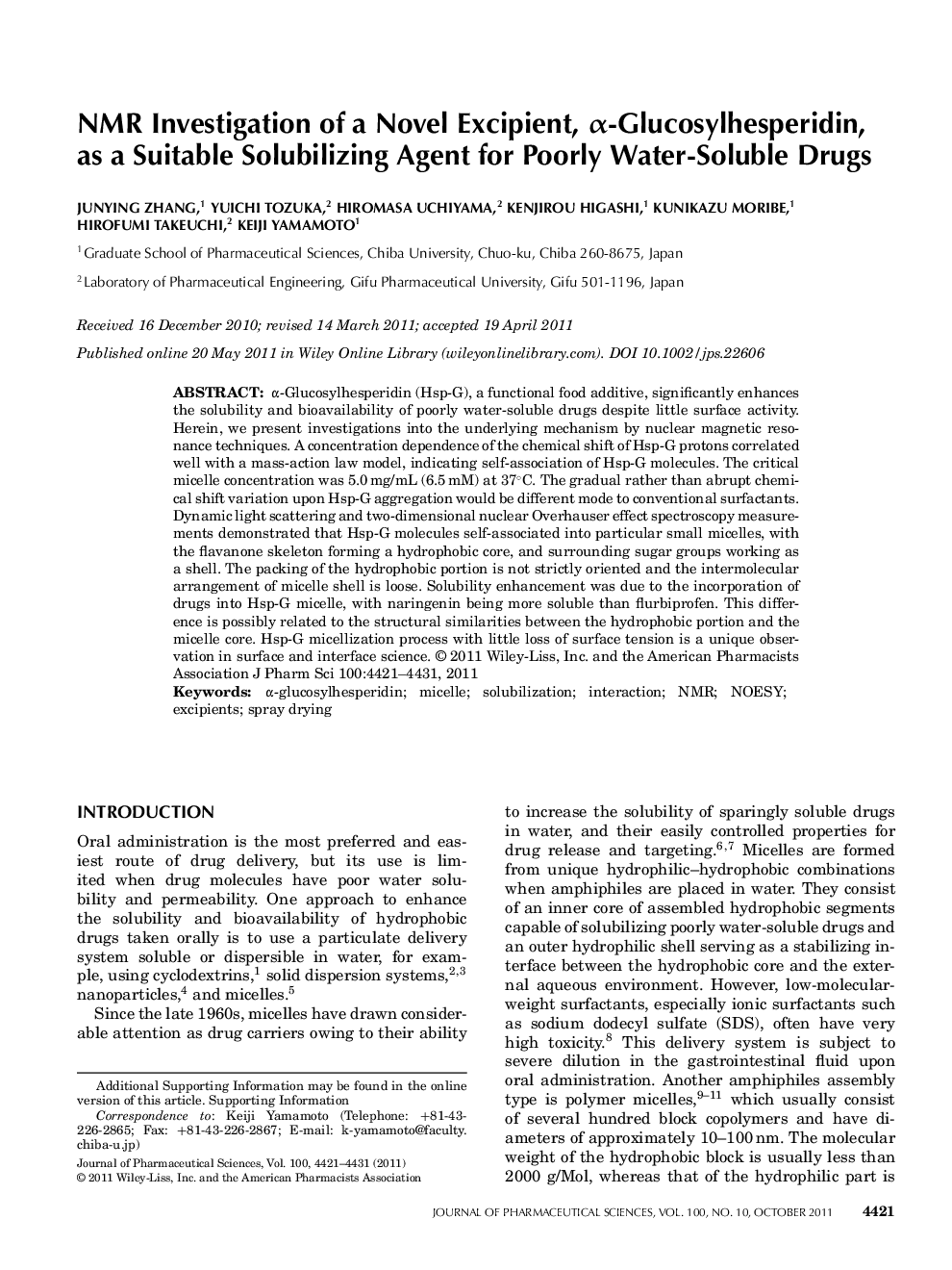| Article ID | Journal | Published Year | Pages | File Type |
|---|---|---|---|---|
| 2485285 | Journal of Pharmaceutical Sciences | 2011 | 11 Pages |
Abstract
α-Glucosylhesperidin (Hsp-G), a functional food additive, significantly enhances the solubility and bioavailability of poorly water-soluble drugs despite little surface activity. Herein, we present investigations into the underlying mechanism by nuclear magnetic resonance techniques. A concentration dependence of the chemical shift of Hsp-G protons correlated well with a mass-action law model, indicating self-association of Hsp-G molecules. The critical micelle concentration was 5.0 mg/mL (6.5 mM) at 37°C. The gradual rather than abrupt chemical shift variation upon Hsp-G aggregation would be different mode to conventional surfactants. Dynamic light scattering and two-dimensional nuclear Overhauser effect spectroscopy measurements demonstrated that Hsp-G molecules self-associated into particular small micelles, with the flavanone skeleton forming a hydrophobic core, and surrounding sugar groups working as a shell. The packing of the hydrophobic portion is not strictly oriented and the intermolecular arrangement of micelle shell is loose. Solubility enhancement was due to the incorporation of drugs into Hsp-G micelle, with naringenin being more soluble than flurbiprofen. This difference is possibly related to the structural similarities between the hydrophobic portion and the micelle core. Hsp-G micellization process with little loss of surface tension is a unique observation in surface and interface science. © 2011 Wiley-Liss, Inc. and the American Pharmacists Association J Pharm Sci 100:4421-4431, 2011
Related Topics
Health Sciences
Pharmacology, Toxicology and Pharmaceutical Science
Drug Discovery
Authors
Junying Zhang, Yuichi Tozuka, Hiromasa Uchiyama, Kenjirou Higashi, Kunikazu Moribe, Hirofumi Takeuchi, Keiji Yamamoto,
